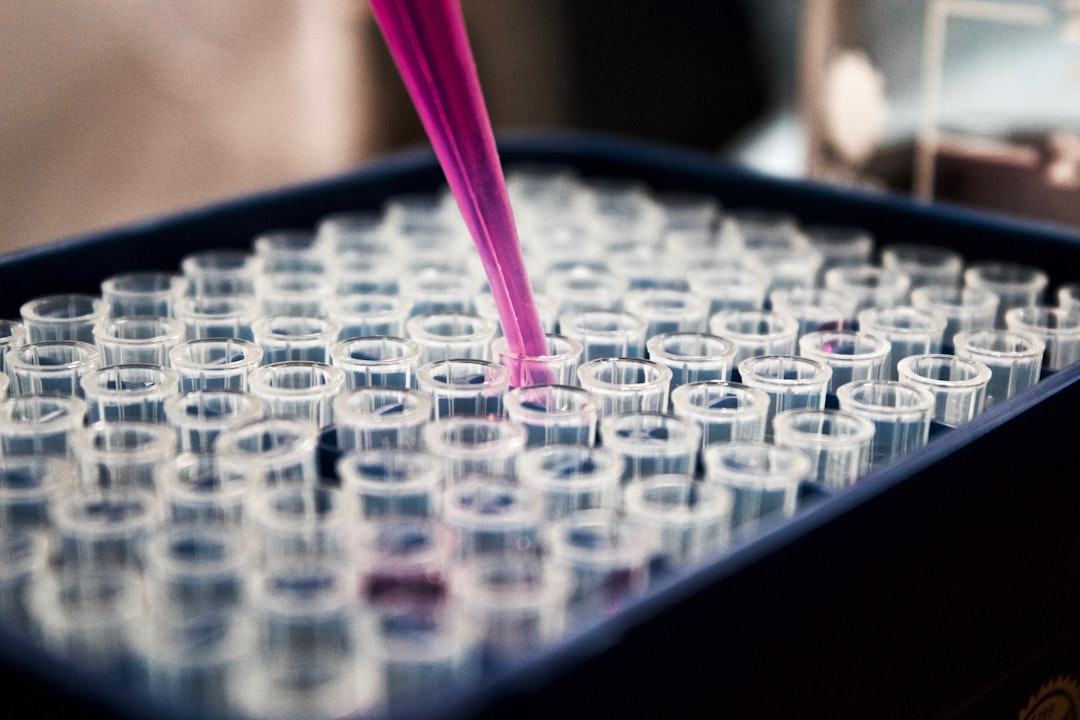What is it about?
This review provides an overview of anaplastic thyroid cancer (ATC), molecular pathways involved in the disease progression, existing therapies, limitations and the associated challenges, and the advancement of nanotechnology-based approaches to overcoming drug resistance and improving drug delivery to achieve theranostic intervention in ATC.
Featured Image

Photo by National Cancer Institute on Unsplash
Why is it important?
Nanotechnological advancements hold immense significance in the context of anaplastic thyroid cancer (ATC) due to their potential to revolutionize both diagnosis and treatment strategies. ATC is notoriously aggressive and often resistant to conventional therapies, presenting a critical need for innovative approaches. Nanotechnology offers precise drug delivery systems, enabling targeted therapy delivery directly to cancer cells while minimizing damage to healthy tissues. Additionally, nano-based imaging techniques enhance early detection and monitoring of ATC, improving prognosis and patient outcomes. By leveraging the unique properties of nanoparticles, such as size, surface chemistry, and biocompatibility, nanotechnology holds promise for overcoming the challenges associated with ATC, offering hope for more effective and personalized treatment options in the fight against this devastating disease.
Perspectives
Nanotechnology technological breakthroughs have enabled us to mitigate challenges associated with existing therapies, such as chemoresistance. They also facilitate the effectiveness of other parameters, such as drug pharmacokinetic properties, specificity, and therapeutic agent stability. Drug resistance can be overcome by loading different nanocarriers with many anti-cancer medicines. The EPR phenomenon that leads to drug resistance can be avoided by encapsulating the drug in nanoparticles such as micelles. The therapeutic molecule can be enclosed into membrane vesicles such as exosomes to provide targeted specificity and immune protection. They are also being used to accurately diagnose ATC in its early stages to enhance the survival rate of the patient. In the future, nanotechnology could be used to develop more effective and targeted drug delivery systems to reduce the side effects of chemotherapy. Antibody-conjugated and gene-mediated NPs are being researched already, which are good candidates for the next generation of ATC treatment to deliver drugs directly to cancer cells only while avoiding healthy cells. This could reduce the amount of drug needed and the side effects associated with chemotherapy. Even though we have made considerable progress, we still need to continue our efforts to generate nano particle-based next-generation medicines to treat ATC. Although most of the nanoparticles proved to be safe and effective in in vitro and in vivo clinical assessments, their application in humans is questionable due to the complexity of organisms and the underlying interaction of nanoparticles with the immune system. Assessment of these nanoparticles on a 3D culture system that replicates the biological system of humans helps in providing more promising clinical relevance and effectiveness.
Mr Lahanya Guha
Read the Original
This page is a summary of: Nanotechnological Advancements for the Theranostic Intervention in
Anaplastic Thyroid Cancer: Current Perspectives and Future Direction, Current Cancer Drug Targets, March 2024, Bentham Science Publishers,
DOI: 10.2174/1568009623666230707155145.
You can read the full text:
Resources
Contributors
The following have contributed to this page










